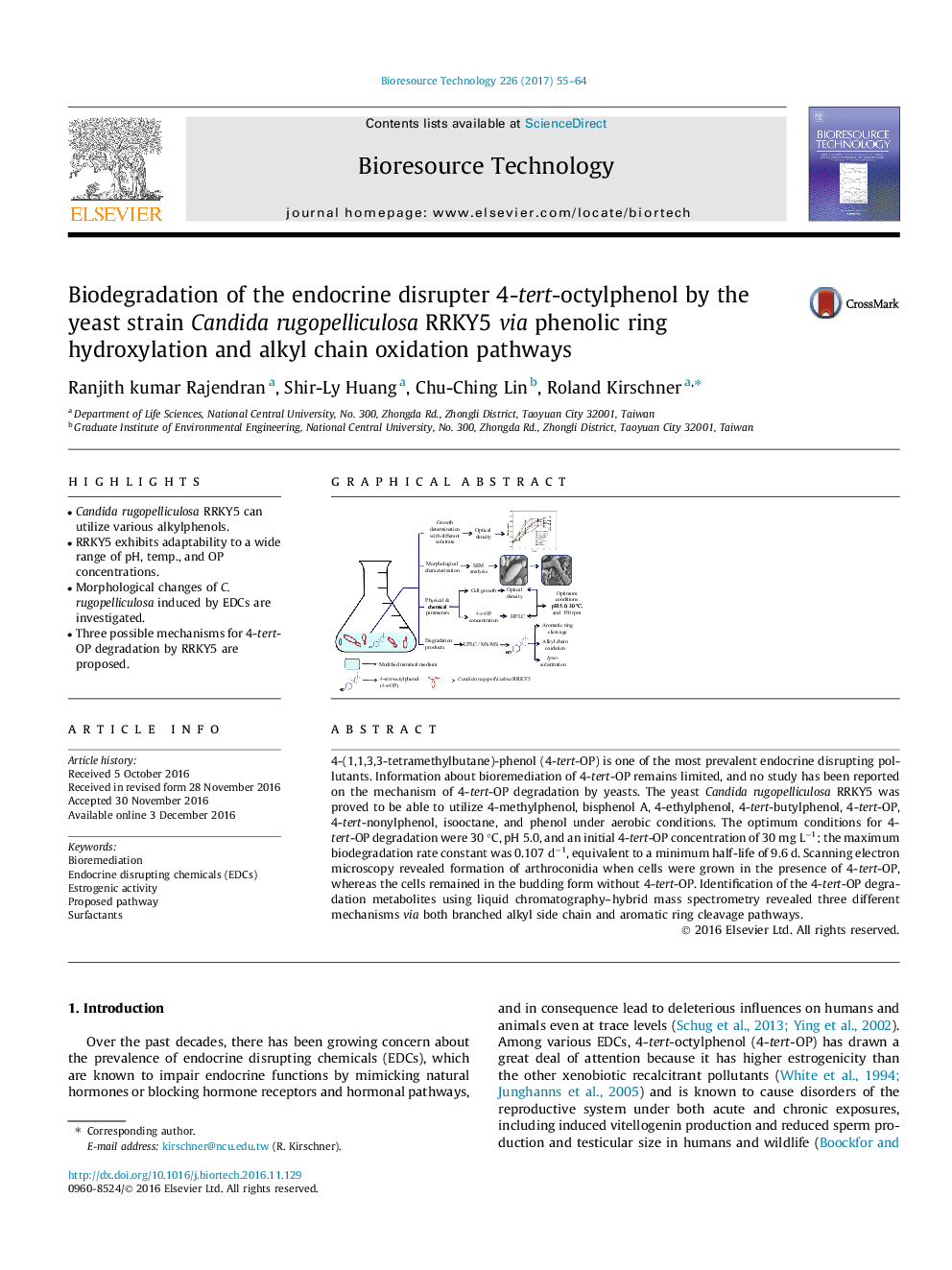| کد مقاله | کد نشریه | سال انتشار | مقاله انگلیسی | نسخه تمام متن |
|---|---|---|---|---|
| 4997631 | 1459917 | 2017 | 10 صفحه PDF | دانلود رایگان |

- Candida rugopelliculosa RRKY5 can utilize various alkylphenols.
- RRKY5 exhibits adaptability to a wide range of pH, temp., and OP concentrations.
- Morphological changes of C. rugopelliculosa induced by EDCs are investigated.
- Three possible mechanisms for 4-tert-OP degradation by RRKY5 are proposed.
4-(1,1,3,3-tetramethylbutane)-phenol (4-tert-OP) is one of the most prevalent endocrine disrupting pollutants. Information about bioremediation of 4-tert-OP remains limited, and no study has been reported on the mechanism of 4-tert-OP degradation by yeasts. The yeast Candida rugopelliculosa RRKY5 was proved to be able to utilize 4-methylphenol, bisphenol A, 4-ethylphenol, 4-tert-butylphenol, 4-tert-OP, 4-tert-nonylphenol, isooctane, and phenol under aerobic conditions. The optimum conditions for 4-tert-OP degradation were 30 °C, pH 5.0, and an initial 4-tert-OP concentration of 30 mg Lâ1; the maximum biodegradation rate constant was 0.107 dâ1, equivalent to a minimum half-life of 9.6 d. Scanning electron microscopy revealed formation of arthroconidia when cells were grown in the presence of 4-tert-OP, whereas the cells remained in the budding form without 4-tert-OP. Identification of the 4-tert-OP degradation metabolites using liquid chromatography-hybrid mass spectrometry revealed three different mechanisms via both branched alkyl side chain and aromatic ring cleavage pathways.
142
Journal: Bioresource Technology - Volume 226, February 2017, Pages 55-64